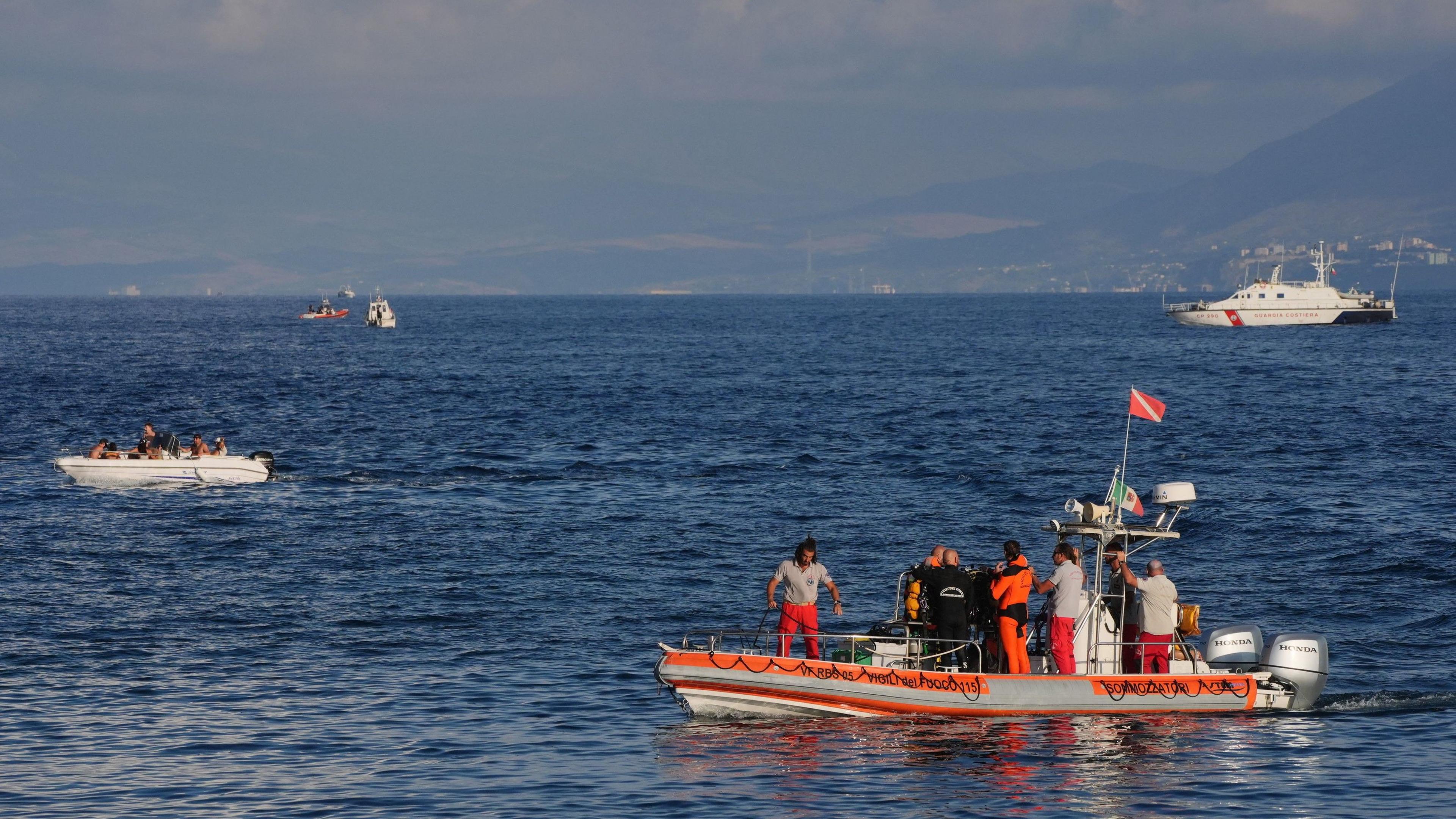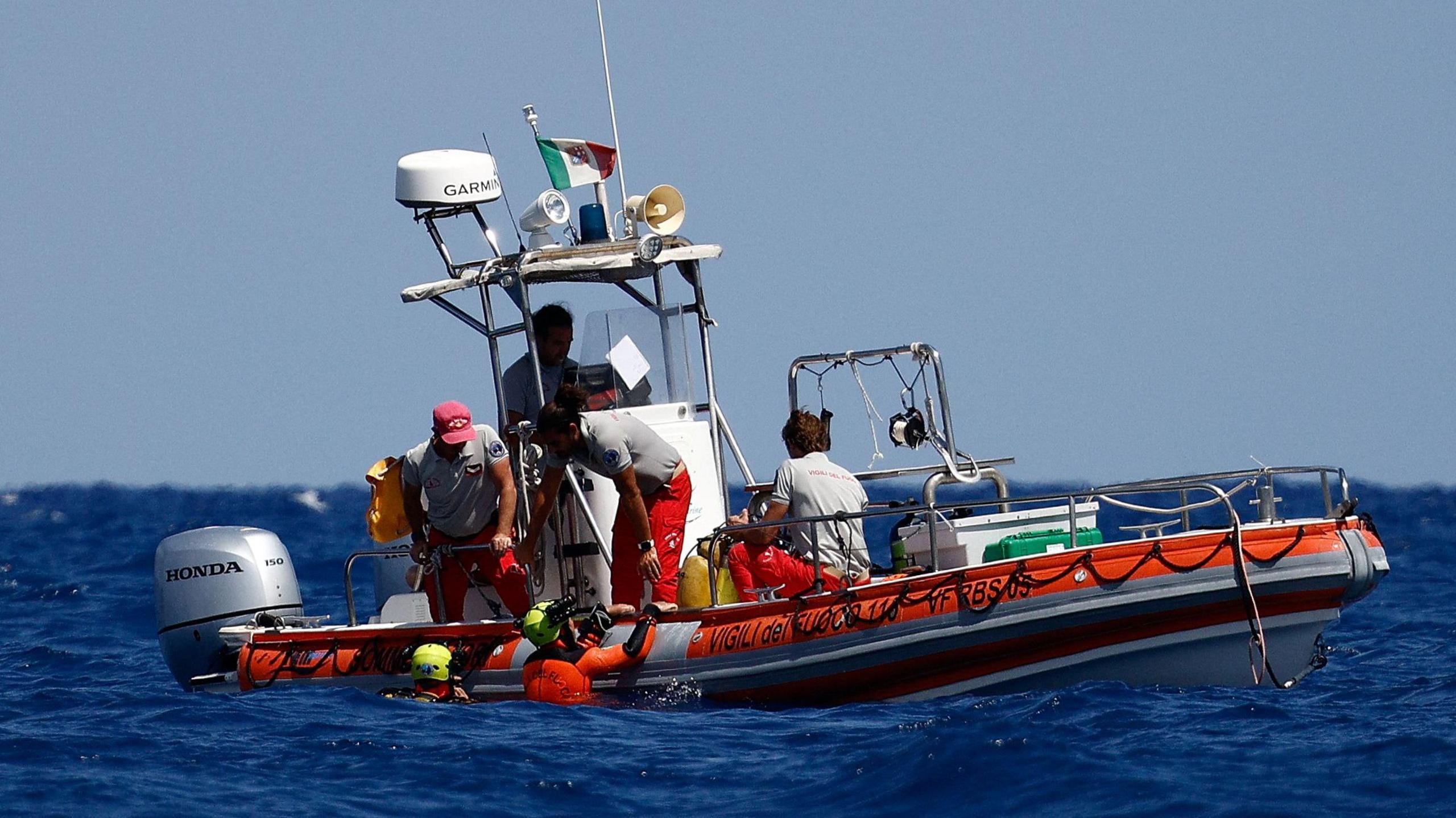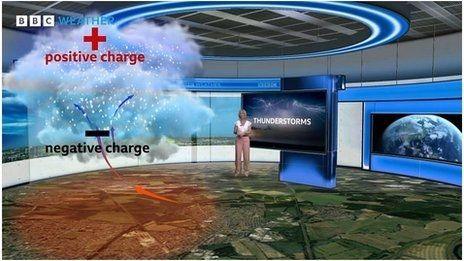Sicily yacht sinking most likely caused by 'downburst'

An Italian Fire and Rescue Service dive team searched for bodies of the victims
- Published
Italian authorities say a downburst was the most likely cause of the sinking of the Bayesian superyacht which led to the deaths of seven people.
Initially it was thought that a waterspout - essentially a tornado over the sea - was responsible for the incident.
But at a news conference on Saturday, officials said it was more likely that it was caused by a downburst - a localised gusty wind associated with thunderstorms.
What is a downburst?
Thunderstorms are powerful and complex phenomena, with air inside a cumulonimbus storm cloud moving rapidly upwards and downwards.
A downburst occurs when air plummets downward from the base of the cloud - often in conjunction with a downpour of rain - producing a powerful wind gust that blows towards the ground.
When it hits a surface, the wind spreads out, blowing outwards unpredictably. The winds associated with downbursts can reach speeds of more than 100mph (160km/h). They tend to be fairly short-lived, typically lasting a matter of minutes.
Downbursts are particularly dangerous for aviation and have been blamed for a number of air crashes over the years. However, the risk tends to be well forecast by meteorologists, helping pilots to avoid them.
How does this differ from a waterspout?
Downbursts and waterspouts both form in conjunction with thunderstorms and both phenomena can cause very similar types of damage.
But the wind patterns within them are very different.
Like tornadoes, waterspouts develop when differing wind directions cause the air in part of a storm cloud to rotate, forming a column of rapidly spinning air that descends down to the surface of the ocean. They tend to be fairly narrow but can be extremely powerful.
In downbursts the air is not rotating, but instead dropping quickly downwards from the storm cloud in a vertical column. When that column of air hits the ground - or the water - it spreads out rapidly in all directions.
Why was a waterspout blamed initially?
From a distance, waterspouts and downbursts can look similar.
A number of tornadoes and waterspouts were also reported in the area leading up to the incident. According to the International Centre for Waterspout Research, there were 18 confirmed waterspouts off the coast of Italy on Monday alone.
Because of their relatively small scale, waterspouts are hard to pick out on weather radar. The heavy rain that falls from thunderstorms can also drastically reduce visibility, obscuring the view for nearby eyewitnesses.
Was this weather unusual?
Thunderstorms are very common in Europe during the late summer.
But these were particularly widespread, with low pressure dominating weather patterns across the Mediterranean, making conditions ripe for severe storms to develop.
Unusually warm seas may also have provided extra fuel, with the Mediterranean recording, external its highest sea surface temperature on record on 15 August.
Climate scientists fear higher sea temperatures caused by climate change may help to feed more violent thunderstorms in future.
Related topics
- Published24 August 2024

- Attribution
- Published26 May 2024
